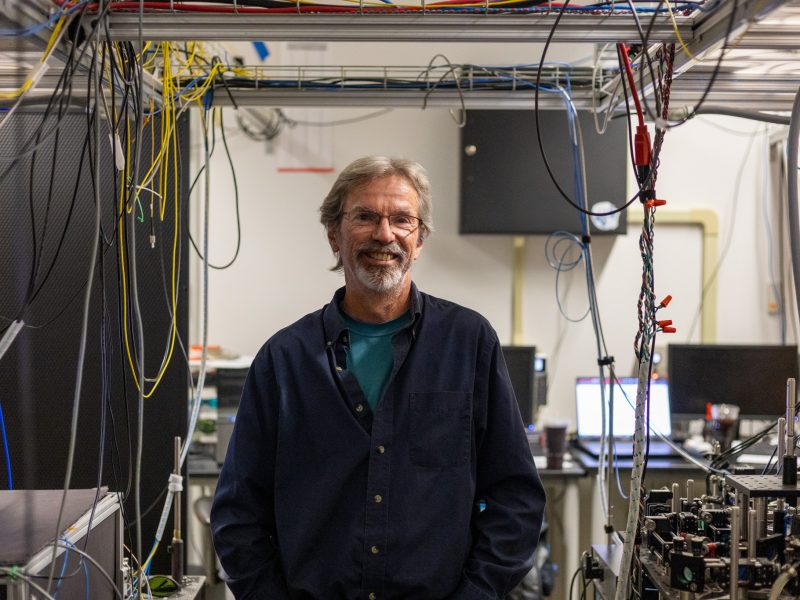University of Maryland Purple Line construction and new two-way bike paths have led to additional safety precautions on campus.
Two bike paths on Paint Branch Drive and along the Purple Line tracks on Campus Drive were recently completed, according to a Sept. 23 email from the university’s Department of Transportation Services. There is now also two-way traffic and pedestrian crossing on Campus Drive after the large progress made on Purple Line construction over the summer.
Both projects have raised some concerns among campus members about biker and pedestrian safety.
To address the safety concerns, the Purple Line’s safety and construction teams will work closely with this university, according to Carla Julian, the stakeholder manager of Maryland Transit Solutions, the construction company contracted to build the light rail. Many construction teams are trained to stay aware of students walking nearby, Julian said.
It is also important for students to remain “extra aware” on campus because it is an “active construction zone,” Julian said. For example, students should avoid using phones when walking to class, she added.
“We want everybody to get to classes safely,” Julian said.
[UMD DOTS to host 10 events in October for annual safety month]
The Purple Line also has a crew of workers dedicated to ensuring all construction measures are safe and aligned with the Americans with Disabilities Act, according to Javier Devesa, the Maryland Transit Solutions construction segment lead.
The crew conducts weekly walkthroughs on campus to identify areas that may need adjustments to comply with the act’s standards, Devesa said at Tuesday’s meeting.The Purple Line implemented a new campaign titled “Be Particular, Ride Perpendicular,” on Aug. 22 to remind bike and scooter users to “keep safety in mind when riding near tracks,” according to its website.
Doran Bosso, the Purple Line Transit Partners’ CEO, said during the meeting that pedestrians should use crosswalks and travel at a right angle perpendicular to the light rail tracks when riding a bike or scooter.
The Purple Line’s summer construction progress has also led to completed sidewalks, embedded tracks and newly paved roadways on campus, according to a video played at Tuesday’s meeting.
Bosso reminded drivers that the light rail tracks “may be a little more slippery than just normal asphalt” as temperatures begin to decrease.
Freshman business management major Maria Stepanyan feels “very reluctant” to drive on campus due to the “big threat” that drivers can pose for student pedestrians.
“Even when I’m walking around campus and I see cars driving by, I feel like they’re constantly stopping for pedestrians and bikers,” Stepanyan said.
Stepanyan said pedestrians should be more mindful of their surroundings and cyclist should use the proper lanes.
Some safety concerns have also emerged about whether pedestrians and cyclists are properly using the new two-way bike paths and designated walking areas.
[UMD DOTS, student organizations transform parking spaces for sustainability initiative]
Marta Woldu, this university’s Department of Transportation Services sustainability assistant director, has heard complaints from bicyclists frustrated by pedestrians walking in the bike lanes. The action forces cyclists to avoid collisions by using the road or switching to the sidewalk, Woldu explained.
There is usually a large learning curve during the beginning of the semester as cyclists and scooter users learn where they are permitted to ride, Woldu said.
To address the concern, this university is working to complete clear path markings between bike lanes and pedestrian walkways, according to Woldu.
A university spokesperson wrote in a statement to The Diamondback that the bike lanes create “safer” and “more comfortable” conditions for cyclists. The lanes also provide safer crossings at intersections and make it easier for micromobility users to travel throughout campus, the statement read.
“The university’s highest priority is the safety of our campus community,” the statement said. “We continue to welcome feedback regarding campus transportation.”
Because more students will be using the Purple Line rather than commuting, the system has the potential to take 5,000 cars off the road each day, according to Woldu.
“Sometimes we feel like we’re just kind of dealing with this lug of construction and its impacts, but the transformation will ultimately have generational effects on our mobility in the region,” Woldu said. “So that’s really exciting.”



